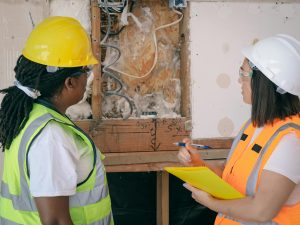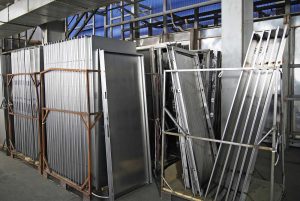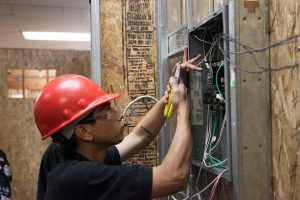Understanding the Real Estate Model Singapore: Insights and Innovations

The Real Estate Landscape of Singapore
Singapore has gained global recognition for its efficient real estate model, largely characterized by a unique blend of government intervention and private enterprise. This balance has led to a resilient housing market, a vibrant urban landscape, and high home ownership rates. In exploring real estate model Singapore, it’s essential to understand the various housing types, the government’s role in development, and the impact of urban planning on property values.
Overview of Housing Types in Singapore
In Singapore, the housing market primarily revolves around two types: public and private housing. Public housing, managed by the Housing and Development Board (HDB), constitutes about 80% of the nation’s homes. These units are designed to be affordable and accessible, making home ownership a reality for many Singaporeans. Privately owned properties, on the other hand, include condominiums and landed estates, which often cater to higher-income individuals and expatriates.
A distinctive feature of Singapore’s housing policy is the emphasis on home ownership. Understanding this paradigm sheds light on the nation’s low vacancy rates and high levels of resident satisfaction. The HDB has played a crucial role in achieving this, providing various financing offers and grant schemes that make purchasing a home more feasible.
Role of Government in Housing Development
The Singaporean government’s involvement in the housing sector is profound. Through statutory bodies like the HDB, the government oversees land use, planning, and development, impacting how housing and commercial spaces emerge. This centralized control allows for coherent urban planning and helps to ensure that adequate housing is available to different segments of the population.
Additionally, the government employs policies such as the Government Land Sales (GLS) program, where it parcels out land to private developers to build residential units, thereby maintaining a steady supply of housing. This interventionist model ensures a balance between demand and supply, a factor crucial amidst Singapore’s limited space.
The Impact of Urban Planning on Property Value
Urban planning in Singapore significantly impacts property values. Through meticulous planning, green spaces are integrated into urban environments, adding aesthetic and recreational value to neighborhoods. Developments are carefully crafted to adapt to the natural landscape, promoting not only functional spaces but also sustainable ecosystems.
Moreover, the government’s foresight in infrastructure development fosters property appreciation. Areas targeted for growth, such as new MRT stations or educational institutions, often see a spike in property values, as demand increases with enhanced connectivity and facilities.
Unique Features of the Real Estate Model Singapore
Public Housing vs. Private Developments
Understanding the dichotomy between public and private developments in Singapore reveals insights into the market’s structure. Public housing is typically sold at subsidized rates, aimed at middle and lower-income families. The flats are furnished with essential amenities and maintain a focus on community living.
In contrast, private developments often feature luxury amenities and cater to affluent buyers. The disparity in pricing and features between the two sectors illustrates the government’s commitment to providing affordable housing while allowing for private enterprise to thrive in a competitive market.
Government Land Sales and Their Significance
The Government Land Sales (GLS) program is intrinsic to Singapore’s real estate strategy. By controlling land sales, the government regulates the supply of land for development, balancing the housing market dynamics. This program is essential in managing the urban landscape while ensuring that developers meet the demands of the population.
An analysis of the GLS shows that it not only impacts the availability of housing but also influences pricing in the market. The cyclical nature of property cycles can be moderated, making it a valuable tool in a densely populated city-state.
Affordable Housing Initiatives in Singapore
Singapore has made substantial strides in affordable housing initiatives. Programs such as the Purchase and Renovation Grant demonstrate the country’s dedication to facilitating home ownership. Lower-income families can access financial aid, making the path to owning a home less daunting.
The government also implements various schemes that promote inclusivity, ensuring that minority groups and first-time buyers receive priority. This thoughtful approach sustains cultural diversity within neighborhoods, fostering community bonding.
Challenges Facing Singapore’s Real Estate Market
Market Demand and Supply Dynamics
Despite its robust framework, Singapore’s real estate market faces significant challenges, primarily stemming from demand and supply dynamics. The rapid population growth, fueled by immigration and natural increase, has led to increased demand for housing. Consequently, this pressure results in a competitive housing environment, driving prices up, especially in high-density areas.
Moreover, as the population ages and employment patterns shift, different housing needs emerge, further complicating supply. The government continually monitors these dynamics to adjust its policies accordingly, but real-time responsiveness remains a challenge.
The Efforts to Address Housing Affordability
Housing affordability remains a critical concern. The rising prices in both public and private sectors pose accessibility challenges for many. In response, policies focused on enhancing the supply of public housing and ensuring affordability for essential workers and lower-income families are being implemented.
Collaboration with the private sector has also emerged as a strategy to address these issues. By incentivizing developers to include affordable units in new projects, the government is making strides towards a more equitable housing landscape.
Environmental and Cultural Considerations
As Singapore advances, balancing environmental sustainability with urban development becomes imperative. The government is promoting green building certifications and encourages eco-friendly practices among developers. Implementing initiatives for solar power use and energy-efficient designs reflects Singapore’s commitment to sustainability.
Culturally, the challenge is maintaining the essence of Singaporean identity amidst rapid modernization. Preserving heritage sites while allowing for new developments is crucial for cultural continuity and community pride.
Comparative Insights: Singapore vs. Global Real Estate Models
Lessons from Other Countries’ Housing Policies
Singapore’s real estate model offers valuable insights for other nations grappling with housing issues. For instance, countries struggling to achieve high ownership rates might consider adopting public housing incentives similar to Singapore’s HDB model. Various nations can draw lessons from Singapore’s effective blend of policy and execution, focusing on community needs and sustainable growth.
Sustainability Practices in Real Estate Development
Sustainability practices in Singapore’s real estate sector stand out globally. The integration of urban greenery, stormwater management systems, and eco-friendly building materials is essential to the nation’s planning agenda. Learning from Singapore’s emphasis on sustainability can help other countries in mitigating climate change impacts through conscious urban planning and building practices.
Future Trends in Housing Solutions
Anticipating future trends, Singapore is venturing into smart housing initiatives that leverage technology for efficient living experiences. The use of IoT in monitoring energy consumption and integrating smart grids provides potential for reducing costs and enhancing living standards.
Additionally, augmented reality (AR) and virtual reality (VR) technologies are set to transform property viewings and design customization. Such innovations could position Singapore as a leader in the future of global real estate, continually adapting to the evolving market landscape.
Success Stories and Case Studies
Notable Developments in Singapore’s Landscape
Several successful developments exemplify the effectiveness of Singapore’s real estate model. Projects such as the Bidadari town and Punggol Waterway reflect innovative urban planning that combines housing with community facilities and green spaces. Notably, these developments integrate housing with vibrant community life and environmental sustainability, showcasing the success of thoughtful planning.
Private Sector Innovations and Collaborations
The private sector also plays a pivotal role in Singapore’s real estate success narrative. Collaborations between developers and the government have led to iconic developments like Marina Bay Sands. Such partnerships leverage expertise and resources, maximizing impact on the urban landscape while fostering economic growth.
Community Impact of Public Housing Policies
Public housing policies have immense social implications, shaping community dynamics and cohesion across neighborhoods. The design of HDB estates promotes social interaction, with amenities such as playgrounds and community centers intended to foster friendships and community spirit. Success stories in this domain highlight how public housing can lead to enriched lives and stronger social fabrics.




